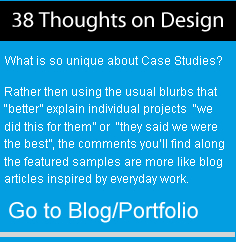
A lot is written about web usability and how it is a mix of technology, sociology, philosophy, communication… and of course design. There are thousands of blogs about web design, telling you how to do this, and how to do that. Recipes and design “tips and tricks” are all over the Internet. Do you want to be serious, corporate, funny, casual, rare, medium rare, well done? Successful? Of course you want to be successful. Who doesn’t? Promises are made and then graphic wizards work their magic and you are suddenly the proud owner of a beautifully designed website - whatever that means.
Web design doesn't exist. It is a myth.
And it’s tired...
What does exist is graphic design, and GUI (graphic user interface) design, which are the latest instances in design history. They both encompass traditional design elements – personality, tone, metaphor – but place a far greater emphasis on information architecture (IA).
Usually (arguably), graphic designers help storytellers and programmers make sense of their writing and messaging for a larger Internet audience. More often than not they fail; occasionally they are on the edge of disaster, and on rare occasions they get it right.
A lot is written about web usability and how it is a mix of technology, sociology, philosophy, communication… and of course design. There are thousands of blogs about web design, telling you how to do this, and how to do that. Recipes and design “tips and tricks” are all over the Internet. Do you want to be serious, corporate, funny, casual, rare, medium rare, well done? Successful? Of course you want to be successful. Who doesn’t? Promises are made and then graphic wizards work their magic and you are suddenly the proud owner of a beautifully designed website - whatever that means.
What we see every day are streams of indistinguishable graphics, cheap wholesale photography, meaningless marketing messages (“solutions” being my favorite), safe color palettes, derivative designs (I want it to look like The Mac site!), poor execution of interactivity and multimedia (could we have a Flash slide show with sound and really cool transitions) and so on…
Slowly, inevitably, the Internet is being transformed into the biggest garbage dump in the world… and web designers are partly to blame. We have no business without clients, which means we are hostage to the limitations our clients impose. But what this demands of us is greater client education in the art of the possible. It is our job to inspire our clients to see beyond what exists, to break barriers and capture the greater customer engagement opportunities that only the web enables. We have been given an incredible tool but rarely do we stretch it to capacity. Our industry is hesitant to embrace new ways of communication. Marketers rely too much on the old rules of graphic design that belong to traditional print and broadcast media, and which need to be left in traditional media. We are all on a new and different level of communication, which opens new doors, new opportunities, a brave new world if you will, that the few and the courageous have entered and the majority have ignored.
Together, we need to stop talking about static brochures, and start talking about Information Architecture, user-centered design, narrative storytelling and online community engagement.
So, what can be done?
Design does not, and should not, work on it's own, creating an empty and meaningless vessel. Design for the web should be a cleverly crafted part of the story telling; it is in fact a critical part of the story. Design for the web is not a box into which we put text and stock photos, links and endless tripe about who we are and why we’re great... as if the world were waiting for us. We further abuse the medium when we appear cheap and obvious; appealing to the lowest common denominator and ignoring the intelligence of good customers, online communities and interested prospects.
The concept and form begin as fine art, and the final product deserves to be no less of a work of art. Incorporating an original concept and high quality content, both textual and visual, with every single project seen as the first one, and the only one. This is a world you envision, create, populate, form out of meaning – it is not a picture – it is a universe unto itself.
This creative process involves planning, research, learning, insight, documentation, ideation, presentation, and production. All of which showcases creativity at its best.
There is no limit to what you can accomplish, just as there is no limit to the companies who shortcut the process, and shortbus their results.

"Design does not, and should not, work on it's own, creating an empty and meaningless vessel. Design for the web should be a cleverly crafted part of the story telling; it is in fact a critical part of the story. Design for the web is not a box into which we put text and stock photos, links and endless tripe about who we are and why we’re great... as if the world were waiting for us. We further abuse the medium when we appear cheap and obvious; appealing to the lowest common denominator and ignoring the intelligence of good customers, online communities and interested prospects."